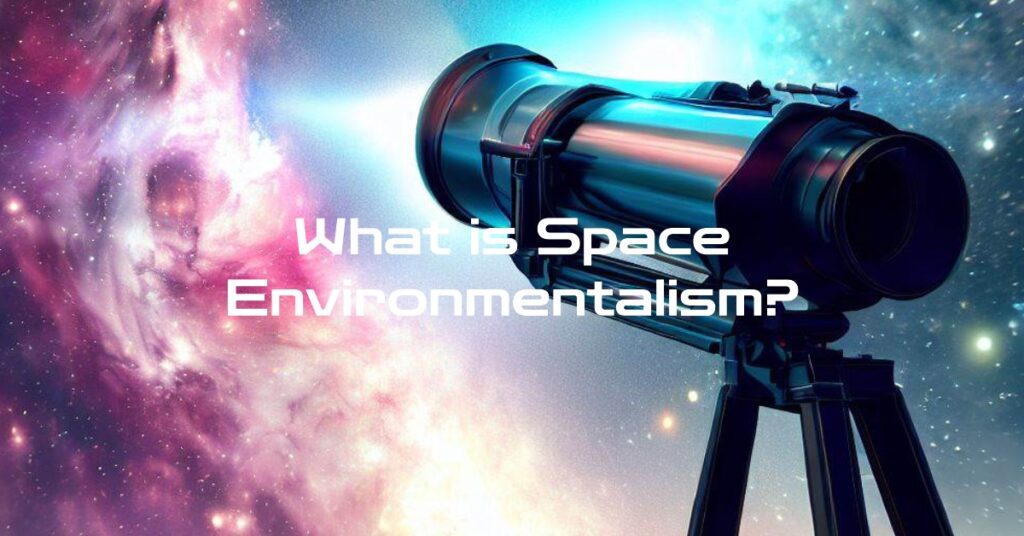Space Environmentalism: Protecting the Cosmos for Future Generations
From the awe-inspiring beauty of distant galaxies to the exploration of celestial bodies, our fascination with the cosmos knows no bounds. However, as we venture further into space, it becomes crucial to consider the impact of human activities on the celestial environment. This is where the concept of space environmentalism comes into play. In this article, we will explore what space environmentalism is and why it is essential for safeguarding the integrity and sustainability of the cosmos for future generations.
The Essence of Space Environmentalism

Space environmentalism encompasses a range of principles, practices, and policies aimed at preserving and protecting the space environment. It involves mitigating the negative impact of human activities on space, preventing space debris accumulation, and ensuring the sustainable use of celestial resources. Just as environmentalism on Earth focuses on conserving and restoring the natural environment, space environmentalism seeks to do the same for the celestial realm.
The Importance of Space Environmentalism
1. Preserving Astronomical Observations and Scientific Research
The space environment plays a crucial role in facilitating astronomical observations and scientific research. Telescopes and space-based instruments rely on clear and unpolluted skies to capture accurate data and make groundbreaking discoveries. Space environmentalism aims to minimize light pollution, radio frequency interference, and other forms of contamination that could hinder scientific observations and research advancements.
2. Mitigating Space Debris and Protecting Space Assets
Space debris, such as defunct satellites, spent rocket stages, and fragments from previous space missions, poses a significant threat to operational satellites and human space activities. Space environmentalism focuses on preventing and mitigating the creation of space debris through responsible space mission planning, satellite design, and end-of-life disposal measures. By minimizing the risk of collisions and the proliferation of space debris, space environmentalism safeguards the integrity of space assets.
3. Ensuring Space Sustainability and Resource Stewardship
Space resources, such as minerals, water, and rare elements, hold immense potential for future space exploration and economic activities. Space environmentalism emphasizes responsible and sustainable practices in resource extraction and utilization to avoid overexploitation and depletion of celestial resources. By promoting resource stewardship, space environmentalism seeks to ensure the long-term sustainability of space activities and minimize negative impacts on the celestial environment.
4. Facilitating International Cooperation and Governance
Space environmentalism requires international cooperation and governance frameworks to address the global nature of space activities. International agreements and guidelines, such as the Outer Space Treaty and the Space Debris Mitigation Guidelines, provide a framework for responsible space behavior and the protection of the space environment. Through collaboration and adherence to these frameworks, space environmentalism fosters a collective effort in safeguarding the cosmos.
5. Inspiring Environmental Consciousness and Sustainable Practices
Space environmentalism serves as a reminder of the interconnectedness between Earth and space. By promoting sustainable practices and environmental consciousness in space activities, it encourages individuals and organizations to adopt similar values on Earth. Space environmentalism can inspire a broader environmental movement, highlighting the need for responsible stewardship of our planet and the preservation of the cosmos.
The Future of Space Environmentalism

As space exploration and commercial activities continue to expand, the importance of space environmentalism will only grow. To ensure a sustainable and thriving space environment, ongoing efforts are needed in several key areas:
1. Space Debris Mitigation and Removal Technologies
Advancements in space debris mitigation and removal technologies are crucial for maintaining a clean and safe space environment. Innovative solutions, such as active debris removal systems and advanced tracking methods, are being developed to reduce the risks posed by space debris. Continued research and investment in these technologies will be essential to effectively remove existing debris and prevent future accumulation.
2. Responsible Space Mission Planning and Design
Space environmentalism calls for responsible mission planning and spacecraft design to minimize the creation of space debris. This includes considerations such as mission disposal plans, the use of deployable structures, and designing satellites with materials that are less likely to generate debris upon re-entry into Earth’s atmosphere. By integrating space debris mitigation measures from the early stages of mission development, we can proactively address the issue of space debris.
3. International Collaboration and Policy Development
Collaboration among nations and space agencies is crucial in developing and implementing effective policies for space environmentalism. This includes sharing best practices, data exchange, and joint efforts in monitoring and mitigating space debris. International coordination can lead to the establishment of standardized guidelines and regulations that promote responsible space behavior and environmental protection.
4. Public Awareness and Education
Raising public awareness about the importance of space environmentalism is essential for fostering a sense of responsibility and inspiring action. Education initiatives can help individuals understand the impact of human activities in space and encourage environmentally conscious practices. By engaging the public through outreach programs, media campaigns, and educational platforms, we can cultivate a generation of space enthusiasts who are committed to preserving the celestial environment.
5. Technological Innovations for Sustainable Space Exploration
Technological innovations play a vital role in advancing sustainable space exploration. Research and development efforts should focus on creating spacecraft propulsion systems with reduced environmental impact, efficient resource utilization methods, and advanced recycling technologies. By integrating sustainable practices into space missions, we can minimize the ecological footprint of space exploration while maximizing scientific discoveries and economic benefits.
Space environmentalism is an essential concept that addresses the need to protect and preserve the celestial environment. By mitigating space debris, promoting sustainable practices, fostering international cooperation, and inspiring environmental consciousness, space environmentalism ensures the long-term viability of space exploration and activities. As we continue to explore the vastness of the cosmos, let us remember our responsibility to be good stewards of the space environment and leave a legacy of sustainability for future generations.
References:
- United Nations Office for Outer Space Affairs (UNOOSA). (n.d.). Retrieved from http://www.unoosa.org/
- European Space Agency (ESA). (n.d.). Retrieved from https://www.esa.int/
- National Aeronautics and Space Administration (NASA). (n.d.). Retrieved from https://www.nasa.gov/
- The Space Report. (n.d.). Retrieved from https://www.thespacereport.org/

C M, a seasoned editor, journalist, and consultant, is deeply fascinated by the convergence of technology, space, and the future of humanity.
With a particular interest in transhumanity, futurology, and the philosophical and ethical dimensions of these domains, C M serves as the lead contributor to SpaceSpotlight and TranscendSphere.
When not penning insightful articles on these rapidly evolving fields, C M indulges in their love for podcasts and books, proudly embracing their status as a ‘Happy Nerd Extraordinaire!’



